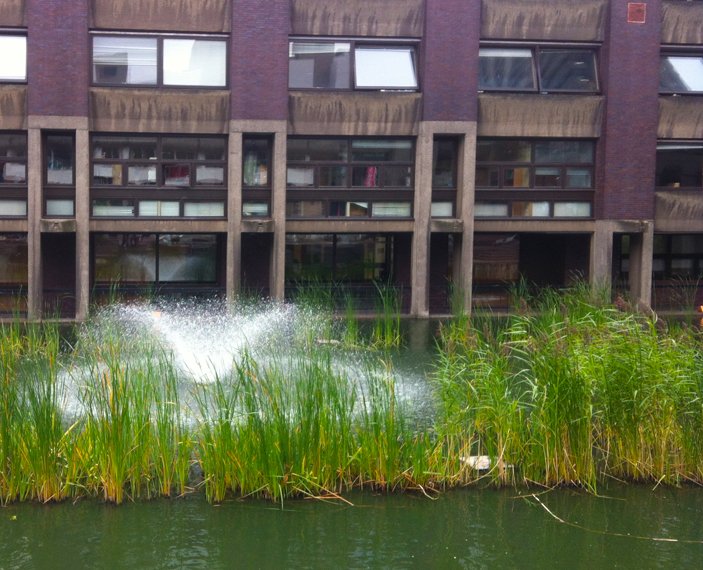Social innovation differs from regular types of innovation, and new ways of thinking about how it should be achieved are being developed. It is different because it requires fundamental change to individuals, communities and institutions. A body of thought is emerging that suggests that organisations should not restrict themselves to taking an external approach to social innovation. Rather, organisations are argued to be able to create a greater capacity for social innovation by looking inwards rather than outwards. Writing for the Stanford Social Innovation Review, Warren Nilsson and Tana Paddock (2014) state that:
“The idea that organisations should turn inward may seem paradoxical at first. When we’re trying to wrestle with the large and complex issues ‘out there’, why would it help to dwell on the relatively small issues ‘in here’?”
However, Nilsson and Paddock explain that in fact the issues that are external are often also internal as well. Experiences of people within the same room can be used to drive social change and generate ideas. This process has been termed as “inscaping”.It involves looking at the inner experiences of people that are members of an organisation during their every day work, argue Nilsson and Paddock. This can mean looking at a variety of different areas such as ideas, intuitions, aspirations, fears, values and memories. It requires people within the organisation to be able to speak honestly with each other about what their experiences are. These might include covering areas like racial issues and mental health problems.
IntelligenthqNilsson and Paddock argue that inscaping can offer solutions for social innovation. It can also provide considerable benefits to a firm. For example, it is explained that inscaping can lead to people talking with one another, defining problems and coming up with solutions through energy and creativity. This requires people to be able to be honest with one another so that divergent thinking space increases (Nilsson and Paddock, 2014). This is considered to be “work inscaping”. There is also “life inscaping”. This looks at areas outside of work. It considers our aspirations, values, cares and where we find meaning in life. People sharing life experiences can come up with solutions together that can lead to social innovations. This can be challenging to do at work, because it requires opening up more than some people are necessarily used to or comfortable with. However, doing this at work can lead to people uncovering social possibilities that “transcend immediate organisational objectives” (Nilsson and Paddock, 2014).
Nilsson and Paddock argue that there are three types of organisations that use inscaping. Catalytic are those that use work inscaping but not life inscaping. They tend to limit themselves to their field, but work relationships are improved and benefit from an openness, directness and honesty that drives results. These organisations like to create, but they do not necessarily look at the social impact of their work. This therefore does not lead to social innovation because life experiences are not drawn on during the inscaping process. There are also “communal organisations”. These are those organisations that use life inscaping but not work inscaping. In these organisations people are empowered for the purpose of finding solutions to large social and moral problems. They do not have an “operational tunnel vision” that catalytic organisations can often have, according to Nilsson and Paddock. However, these organisations also have problems with social innovation and struggle to develop a culture that supports this. This is because people do not necessarily propose alternative solutions that may lead to conflict because they do not wish to disturb the harmony that exists.
Meanwhile the third type of organisation, the “transformative organisation” uses both work inscaping and life inscaping. This leads to a “profound visceral shift” according to Nilsson and Paddock. These work places are engaging and the effect social change, but they also become a living expression of the change that the employees within want to create. They are often experimental and try out different ways of working through both types of inscaping to be able to achieve social innovation. For those organisations that want to introduce social innovation, it is argued to be this that makes the difference and this is what they should strive for.
In the following video, given for an independently organized TED event, Warren Nilsson further explains what he means by “Inscaping” and sustained social change:

Paula Newton is a business writer, editor and management consultant with extensive experience writing and consulting for both start-ups and long established companies. She has ten years management and leadership experience gained at BSkyB in London and Viva Travel Guides in Quito, Ecuador, giving her a depth of insight into innovation in international business. With an MBA from the University of Hull and many years of experience running her own business consultancy, Paula’s background allows her to connect with a diverse range of clients, including cutting edge technology and web-based start-ups but also multinationals in need of assistance. Paula has played a defining role in shaping organizational strategy for a wide range of different organizations, including for-profit, NGOs and charities. Paula has also served on the Board of Directors for the South American Explorers Club in Quito, Ecuador.










